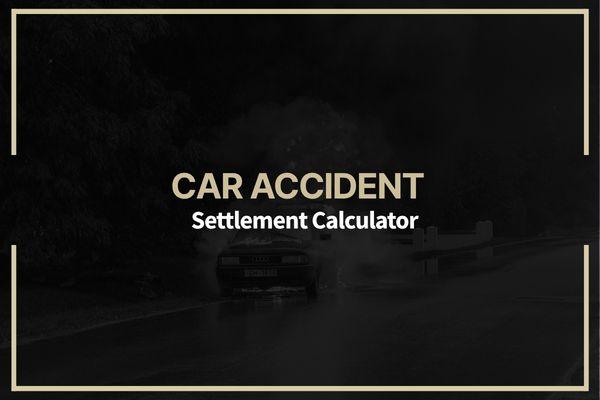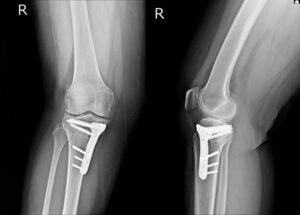Determining who is at fault after an accident can be complicated. California follows a comparative negligence law. This means that even if someone is partly at fault for their injuries, they can still receive financial compensation. It ensures that victims are not completely denied recovery, even if they share some responsibility. This law plays a critical role in personal injury cases and affects how damages are awarded.
At Vaziri Law, we assist accident victims in understanding California’s pure comparative negligence rule. We guide them through the process, helping them walk through its complexities with ease. Our goal is to make this legal concept clear and manageable for everyone we serve. To protect your interests, it’s important to understand how fault is assigned under California law.
Understanding California’s Comparative Negligence Law
Many personal injury cases involve shared fault between multiple parties, and California follows a comparative negligence law. This law decides how compensation is given when an accident involves more than one person at fault. It ensures that each person’s level of responsibility is considered when determining the final amount they receive.
What is Comparative Negligence?
Comparative negligence is a legal concept that lets injured individuals receive compensation even if they share some blame for the incident. In this system, your payout is decreased based on the portion of responsibility attributed to you.
For example, if you are awarded $100,000 in damages but found to be 30% at fault, you would receive $70,000. This system ensures that even if someone shares responsibility for an incident, they can still seek compensation. It doesn’t completely block them from getting help. The California civil jury instructions help courts figure out who is at fault and decide fair amounts for compensation.
How Comparative Negligence Differs from Contributory Negligence
Some states have contributory negligence laws. These laws stop victims from receiving any compensation if they are found even slightly at fault. However, California takes a different approach. It follows the pure comparative negligence rule, which is more supportive of victims. This rule lets victims receive compensation even if they share some responsibility for the incident.
Even if you’re 99% at fault for an accident, you can still recover 1% of your damages under California law. This law benefits injured individuals by allowing them to seek financial relief even in complex liability cases. The application of California’s pure comparative negligence ensures that compensation is distributed fairly.
Los Angeles
negligence law lawyer
How Comparative Fault Works
Determining fault in a personal injury lawsuit requires a thorough review of the evidence. Courts use specific guidelines to assign blame and calculate compensation. Comparative fault laws make sure that if someone gets hurt, they can still get some financial help. These laws prevent the injured person from being completely cut off from receiving relief, even if they were partly at fault.
Determining Percentage of Fault in Personal Injury Cases
California courts use various factors to determine fault percentages. Collecting evidence is crucial, and key items like police reports, medical records, witness statements, and expert opinions can make or break your case. The jury decides how much responsibility each party involved in the accident has.
Reducing Damages Based on Plaintiff’s Fault
The amount you receive in compensation depends on how much fault is assigned to you. If the jury decides that your actions played a role in causing the accident, your compensation will be lowered based on your level of responsibility.
For instance, if you suffered $50,000 in medical bills but were found 20% at fault, you would receive $40,000. This system ensures fairness in assigning responsibility and financial compensation. California Civil Code section guidelines apply when assessing how damages should be adjusted.
Types of Cases Involving Comparative Negligence
Comparative negligence applies to various personal injury cases. The law considers each party’s role in causing an accident before determining liability. Common cases include car accidents, premises liability cases, and product liability claims.
Auto Accidents
Car accidents often involve multiple parties. In a rear-end collision, the driver in front may be partially responsible if their brake lights are not working. Comparative negligence law aims to assign fault fairly. This is especially important in situations where an injured person does not wear a seat belt. In such cases, their failure to take this safety measure could affect the amount of compensation they receive.
Premises Liability Cases
Property owners maintain safe conditions. California law may reduce an injured person’s compensation if they ignore warning signs. Acting carelessly can also lead to a reduction in their payout. Premises liability claims often involve accidents caused by defective staircases, wet floors, or inadequate security.
Product Liability Cases
Manufacturers may be held accountable for products that are defective or unsafe. However, if a consumer misuses a product in a way that contributes to their injuries, their compensation may be reduced. Product defects are evaluated to determine if the manufacturer failed to exercise ordinary care.
Medical Malpractice Cases
Comparative negligence also applies to medical malpractice claims. If a patient fails to follow a doctor’s instructions and their condition worsens, they may be found partially responsible. In some cases, strict liability may apply if a healthcare provider’s intentional actions cause harm.
negligence law lawyer
get a free consultation
Determining Fault and Damages
Calculating damages in California personal injury cases requires attention to detail. It involves evaluating evidence and determining who is liable.
Gathering strong evidence is essential. Police reports, photos, medical records, and witness statements are key to proving fault in a personal injury case. Defendant claims must be carefully examined to disprove allegations of contributory negligence.
Factors Considered by the Court in Assigning Fault
Courts look at several factors to decide who is at fault, such as negligence, what caused the injury, and how severe the injuries are. According to the California Supreme Court, liability depends on whether someone’s actions were a significant cause of the harm suffered. Proximate cause also plays a role in determining whether a party is partially at fault.
Once fault is determined, damages are calculated by adding up economic losses like medical bills, lost wages, and property damage. The final compensation amount is adjusted according to the plaintiff’s percentage of fault. In California, the jury decides the financial award based on comparative negligence.
Challenges and Complexities of Comparative Negligence
Comparative negligence cases can be tricky. This is particularly true when insurance companies attempt to assign blame or when several parties are involved. Defendant claims may attempt to assign blame unfairly to minimize payouts.
Insurance Company Tactics to Shift Blame
Insurance companies work hard to pay as little as possible. They may argue that your negligence caused the accident or that you failed to take precautions, like wearing a seat belt. Their goal is to reduce or deny your compensation. We push back against these tactics by presenting strong evidence to prove your injuries were caused by the defendant’s actions, not your own.
Furthermore, insurance adjusters may claim that your own decisions contributed to the damages. Whether it’s arguing that you didn’t take care of your property after a car crash or suggesting you ignored medical advice, they try to limit your payout. We fight these strategies to ensure you get the financial support you deserve.
Handling Cases with Multiple Defendants or Plaintiffs
Some personal injury cases involve multiple parties. If two or more defendants share liability, California law ensures that each is responsible only for their percentage of fault. This prevents one party from bearing all the costs.
At the same time, if multiple plaintiffs file a claim, the court must determine how damages should be divided. Our team carefully builds your case to prove each party’s degree of fault. We fight to get you fair compensation that truly reflects your injuries and losses.
What if I Was Primarily at Fault?
Even if you were mostly at fault for an accident, California’s pure comparative negligence rule allows you to recover damages. Some states don’t allow you to recover damages if you’re more than 50% at fault. However, California is different—it lets you seek compensation regardless of how much responsibility you bear.
For example, if you were 70% at fault in a car crash and suffered $100,000 in damages, you could still recover $30,000. We work to reduce your assigned percentage of fault to maximize your financial compensation.
Call now for a free consultation
with a Los Angeles injury lawyer
Why You Need an Experienced Personal Injury Attorney
Personal injury cases involving comparative fault laws require strong legal representation. Our attorneys help victims recover damages and protect them from insurance company tactics.
Maximizing Your Damages Award
Having an experienced attorney can transform the outcome of your case. At Vaziri Law, we gather evidence, consult experts, and build a strong argument to maximize your compensation—whether it’s for a car accident, slip-and-fall, or defective product. If multiple parties are involved, we ensure your damages are calculated accurately and fairly.
Even if you’re partially at fault, California’s pure comparative negligence law lets you recover damages no matter how much you’re at fault, unlike other states that cut off recovery if you’re more than 50% responsible.
Protecting Your Rights After an Accident
Dealing with personal injury cases can feel stressful, particularly when you have to handle insurance companies. You might be struggling with medical expenses, missing out on income, or facing other financial pressures. We aim to take care of the complicated legal details so you don’t have to.
Our team ensures that every legal requirement is fully met, from proving negligence to demonstrating the injuries caused by the accident. Whether your case involves strict liability or contributory negligence, we fight for the maximum compensation available.
If you were injured due to another party’s negligent actions, do not let insurance companies undervalue your claim. Contact us today for a free consultation, and let us help you seek justice.
Consult With Our Personal Injury Attorneys for a Free Case Consultation
If you were injured in an accident, you deserve legal representation that fights for your rights. At Vaziri Law, we are committed to helping you recover financial compensation for medical bills, lost wages, and other damages.
Our team provides personalized legal support to ensure you receive the compensation you deserve. Contact us today for a free consultation. Let us fight for you.



